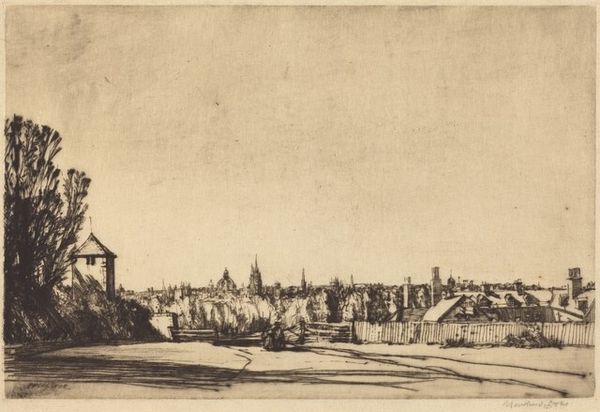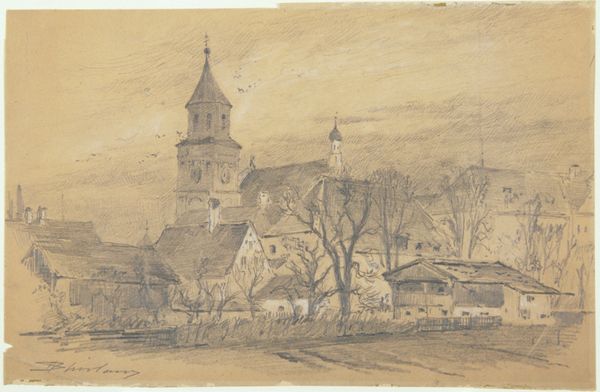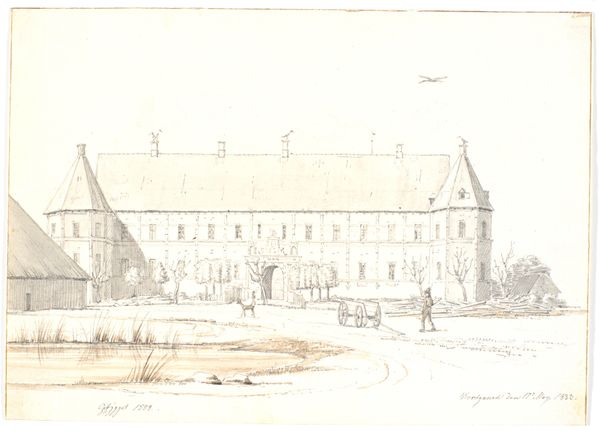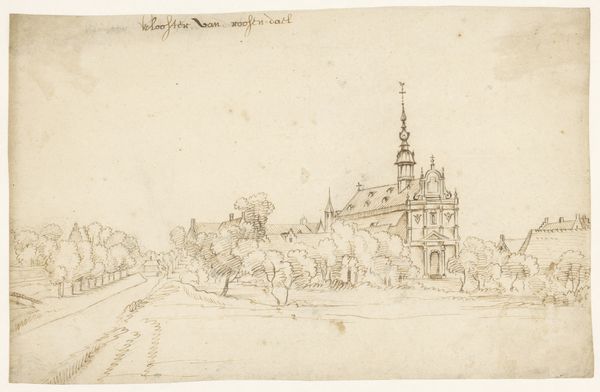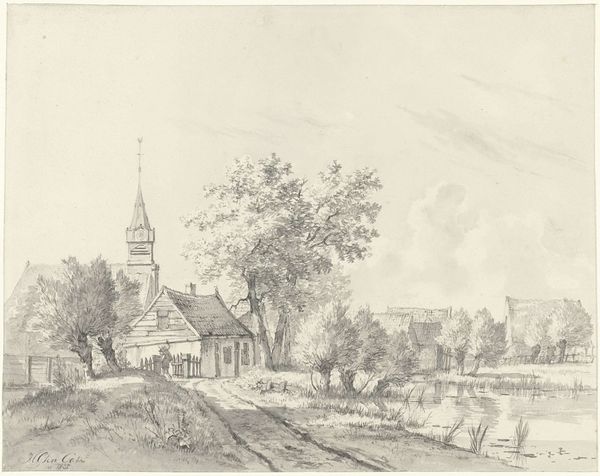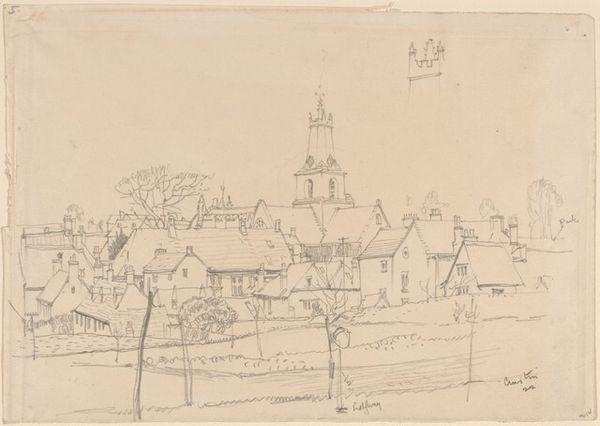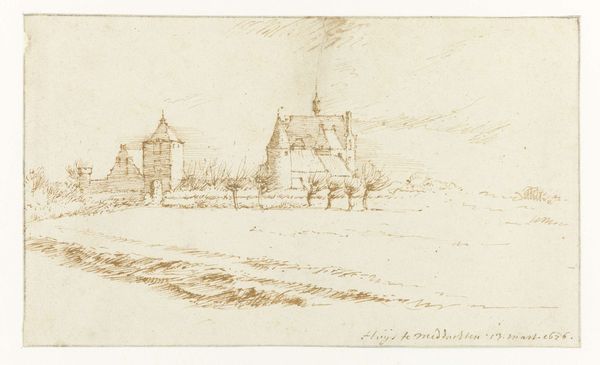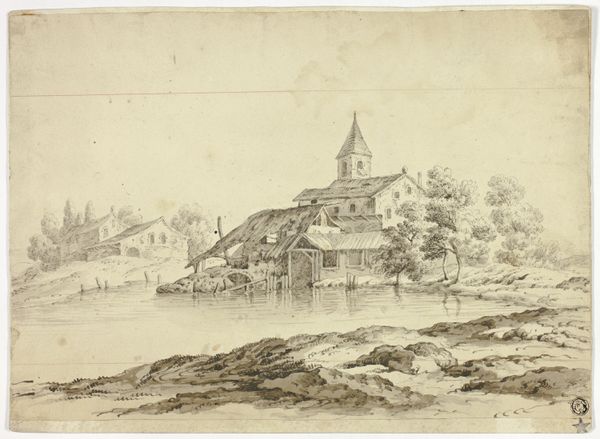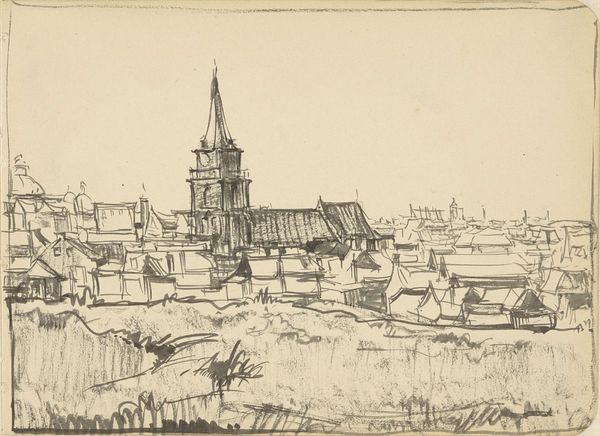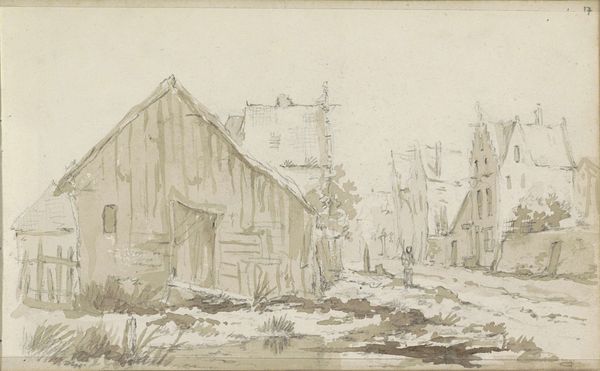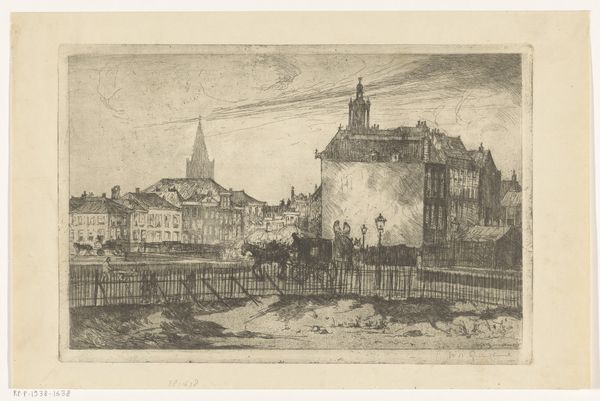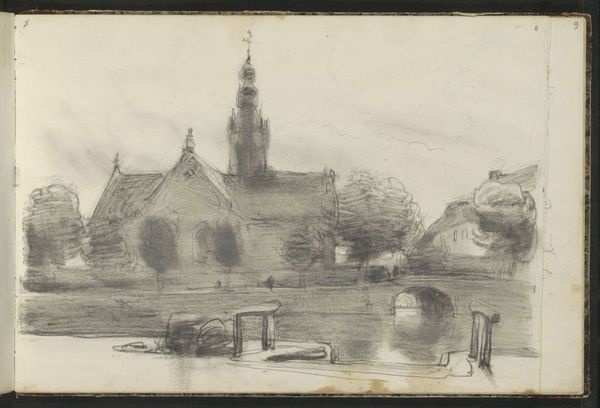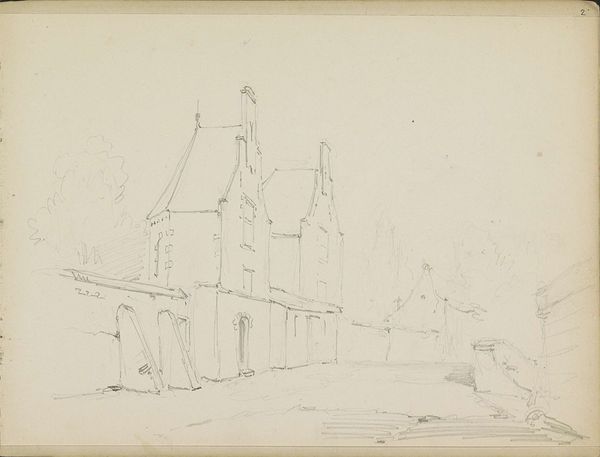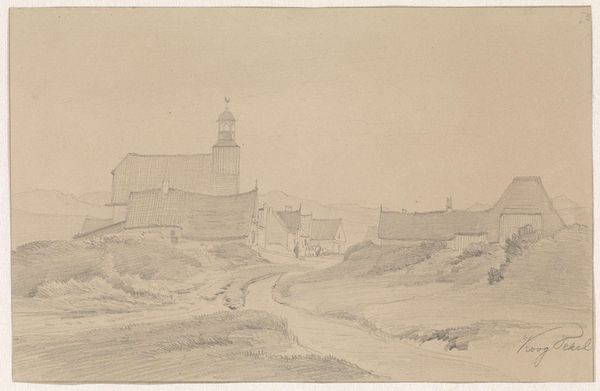
drawing
#
architectural sketch
#
landscape illustration sketch
#
drawing
#
amateur sketch
#
toned paper
#
light pencil work
#
pencil sketch
#
incomplete sketchy
#
pen-ink sketch
#
watercolour illustration
#
watercolor
Dimensions: support: 18.5 x 35.7 cm (7 5/16 x 14 1/16 in.) support: 38.1 x 50.7 cm (15 x 19 15/16 in.)
Copyright: National Gallery of Art: CC0 1.0
Curator: James McBey's 1917 drawing, "Hesdin," rendered in watercolor and pencil on toned paper, offers a glimpse into a war-torn landscape. Editor: There's a quietness to it, despite knowing it was made during wartime. The soft washes and delicate pencil lines create a peaceful, almost melancholic mood. The composition is interesting with the church anchoring one side. Curator: Absolutely. The seemingly simple composition reflects the socio-political atmosphere of the time. Paper was a readily available material and McBey was attached to the army, offering context for the medium and rapid execution of the artwork. Editor: Yes, but observe how the tonal variations build depth and structure. The artist manipulates light to create a distinct hierarchy, the architectural form dominating the plane. Semiotically, the steeple and sturdy architectural structure contrasts with the ephemerality of war, doesn't it? Curator: From my point of view, the landscape reflects wartime labour - or lack of it - within a quickly occupied or recently liberated locale. Fields remain untouched, under-farmed or recently scorched earth. What is visible and what isn't informs my appreciation for McBey's process, giving immediacy to his working materials at the time. Editor: It’s an efficient, functional application of watercolour, indeed. However, there are aspects of symbolism present that draw the eye inwards; consider, say, the upward thrust of the spire reaching for an absent higher power. Curator: The artist had a limited production line at this point. He uses existing conditions and materiality to render conflict visible in society through paper stock limitations and material costs. Perhaps we should avoid investing any grander semiotic meaning on such everyday creative decisions! Editor: Regardless, the work presents viewers with complex layers of engagement that merge into the overarching aesthetic intention, one both sombre yet captivatingly rich. Curator: I agree. McBey's artistic engagement brings forward not only a sense of a place at a particular historical moment, but the economic realities and means that informed its creation. Editor: A wonderfully multifaceted example of formal tension meeting subtle emotional expression, no matter what was made available for the artist to utilize!
Comments
No comments
Be the first to comment and join the conversation on the ultimate creative platform.
